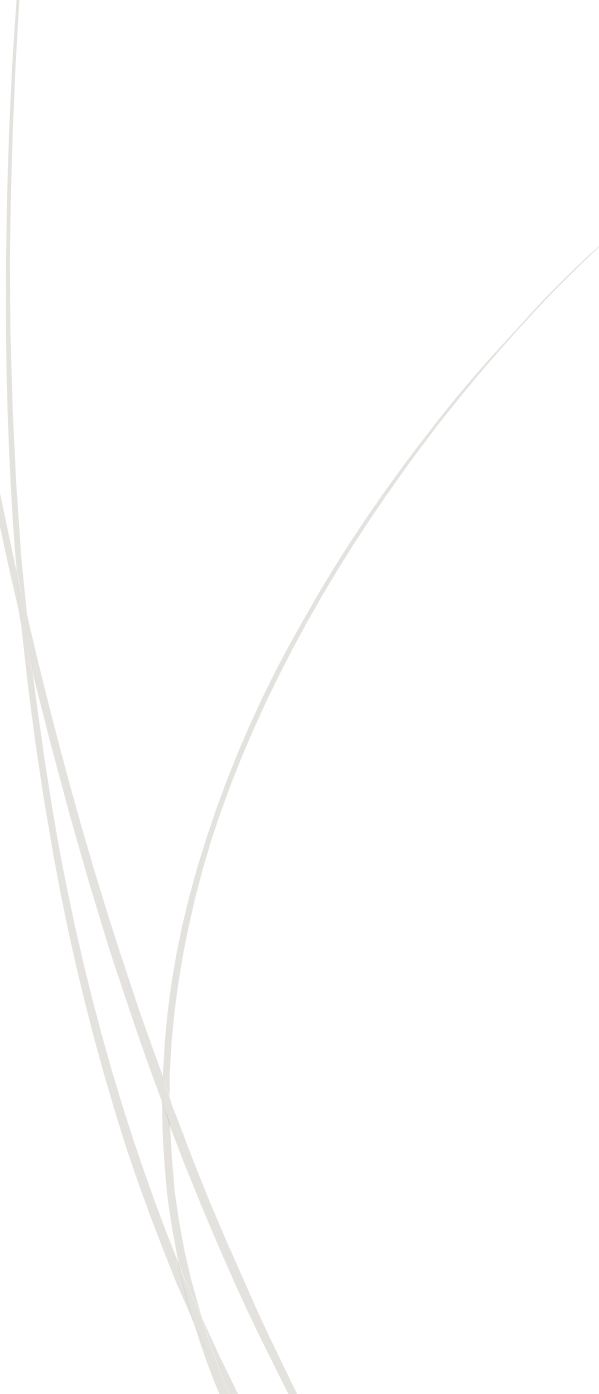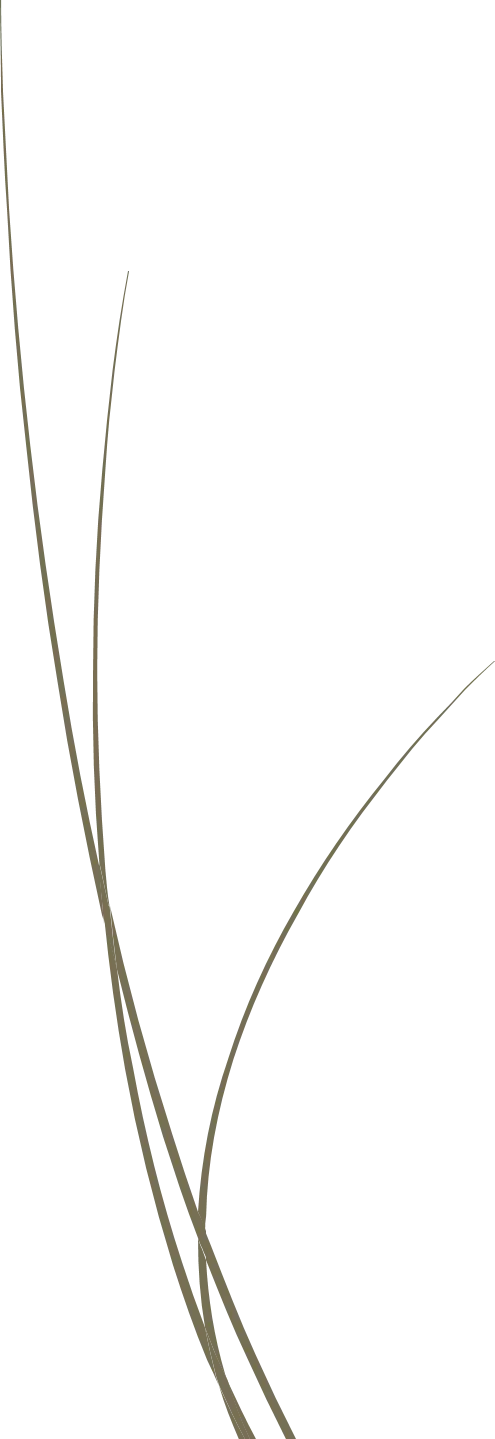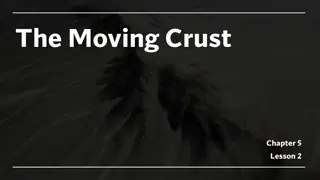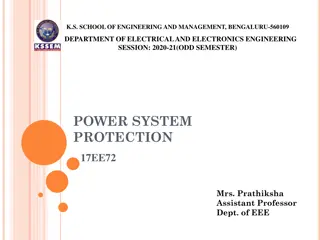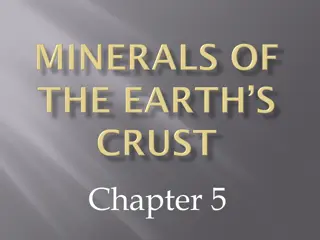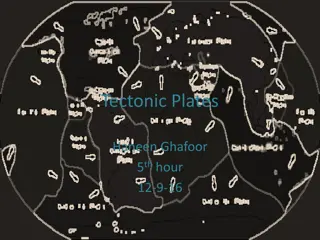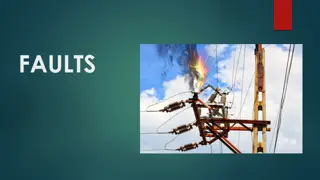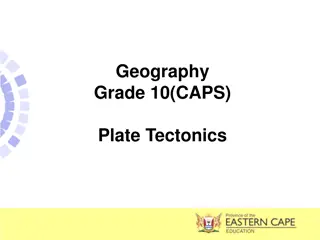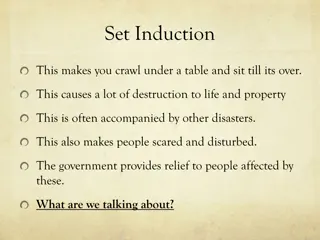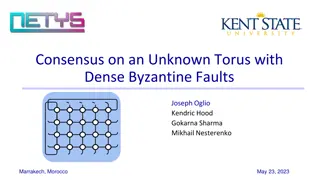Faults in the Earth's Crust
Stresses in the earth's crust can lead to the formation of faults, where rocks are displaced due to relative movement. Faults can vary in size and shape, with different types such as normal faults. Movement along fault planes can be either translational or rotational. This classification helps in understanding the geometry and genesis of faults in the Earth's crust.
Download Presentation

Please find below an Image/Link to download the presentation.
The content on the website is provided AS IS for your information and personal use only. It may not be sold, licensed, or shared on other websites without obtaining consent from the author.If you encounter any issues during the download, it is possible that the publisher has removed the file from their server.
You are allowed to download the files provided on this website for personal or commercial use, subject to the condition that they are used lawfully. All files are the property of their respective owners.
The content on the website is provided AS IS for your information and personal use only. It may not be sold, licensed, or shared on other websites without obtaining consent from the author.
E N D
Presentation Transcript
FAULTS Introduction When stresses in the earth crust act on soft plastic rocks, they bend or fold the rocks. But when stresses act on hard, brittle rocks, they fracture or break the rocks. A fault is a type of fracture along which there has been relative movement displacing the wall rocks on either side of the fault. The intersection of a fault with the earth s surface is known as the fault line or fault trace or fault outcrop. Movement of fracture can either be vertical or horizontal or a combination of these. The surface on which movement has taken place is the fault plane. A fault is not always represented by a plane. It may in fact be a zone of crushed or brecciated rock. While some faults are only a few centimeters long, others may be traceable for hundreds of kilometers. Tensional, compressional and torsional forces operate within the earth s crust to form faults.
The outcrop of a fault plane can be straight or sinuous depending on its dip and the relief of the area. The dip of a fault is the angle between the Fault plane and the horizontal. The rocks lying on either side of fault plane define the walls of the fault blocks. The rock mass lying above the incline fault plane is the hanging wall while the mass lying below is the foot wall. The side of the fault where movement has been apparently downward is the downthrow side while the other side where the apparent movement has been upward is the upthrow side. The throw of a fault is the vertical displacement of the ends of a faulted bed. The heave of a fault is the horizontal movement of the two ends of a faulted bed. The throw is the vertical component of the dip separation in such a section while the heave is the horizontal component of the separation.
T FAULT S M A P R C B Q O Angle BCA = Angle of dip of the fault Angle BAC = The hade of the fault AB is the throw BC is the heave Fig. 5.0: Fault
Movement Along Fault Planes The movement along fault planes can be translational or rotational. (a) Rotational movements are those in which once parallel lines are no longer parallel faulting. The center of rotation is a point in the fault plane and the axis of rotation is a line that is perpendicular to the fault plane at this point. The center of rotation may shift with time. It must be stated that all faults have a certain amount of rotational movement. (b) In translated movement, rotational movement is negligible. All sides of the block which were parallel to one another before the faulting are still parallel after the dislocation.
CLASSIFICATION Broadly, faults can be classified according to their geometry or genesis. A. GENETIC CLASSIFICATION (i) A normal Fault: is a fault along which the hanging wall has moved relatively downwards when referred to some datum. Movement along normal faults can take one of the following forms: Footwall is stationary and the hanging wall moves down Hanging wall remains stationary and the footwall moves up. Both walls move up but the footwall more than the hanging wall. Both walls move down, but the hanging wall moves farther than the footwall.
(ii) Reverse Fault: If the footwall has an apparent downward movement the fault is a reverse fault. Generally the dip angle is less than 45o. Although, this is not always true.
(iii) Strike-slip Fault: A strike-slip fault has its net slip along the fault strike. If the slip direction is parallel to the strike of the fault plane, the fault is known as a strike slip or tear or wrench or transform or transcurrent fault. An observer standing on one side of the fault facing it, will discover that the block on the other side has moved. If it has moved to his right, the fault is referred to as right lateral (or dextral) strike slip fault. If the block has moved to the left, the fault is a left lateral (or sinistral) strike slip fault.
(iv) Step fault: Normal faulting may be accompanied by the tilting of blocks resulting in tilted fault blocks. Several parallel faults may develop with their downthrow sides systematically on the sides of the faults. The beds affected are thrown down in a succession of steps. Fig. 5.2: Step fault
(v) Graben or Rift Valley: A fault block may be bounded on both sides by normal faults along which the net slip is more or less equal. There is therefore little or no tilting of the block. A downthrow block which is long compared with its width and lowered between the faults (Fig. 5.3) is a rift valley or graben. When the block is raised, the structure is known as a Horst (Fig. 5.4). The Black Hills in central Arizona constitute an example of the horst. The famous East African Rift valley and the Benue Valley in Nigeria are rift valleys. Fig. 5.3: Graben
(vi) Thrust fault: A thrust fault or thrust is a fault with a dip less than 45o and in which the hanging wall has moved up relative to the footwall. An overthrust is a low angle fault plane (dip usually less than 10o) along which movement has taken place, the strata above the fault plane having been carried over great distances in a near horizontal direction (Fig. 5.5 & 5.6). Fig. 5.6: Low-angle thrust plane
B. GEOMETRICAL CLASSIFICATION The geometrical classification of faults may be based on the following: (a) Altitude of fault relative to the altitude of adjacent beds: (i) A strike fault is one that strikes essentially parallel to the strike of the adjacent rocks. (ii) A dip fault strike essentially parallel to the direction of the dip of adjacent beds. An oblique fault strike obliquely to the strike of the adjacent rocks. (iii) A longitudinal fault strike parallel to the regional structure while a transverse fault strikes perpendicularly or diagonally to the strike of the regional structure. (b) Direction of movement of the fault plane: A dip-slip fault is one in which the net slip is up or down the dip of the fault. An oblique slip fault is one in which the net slip is diagonally up or down the fault plane.


